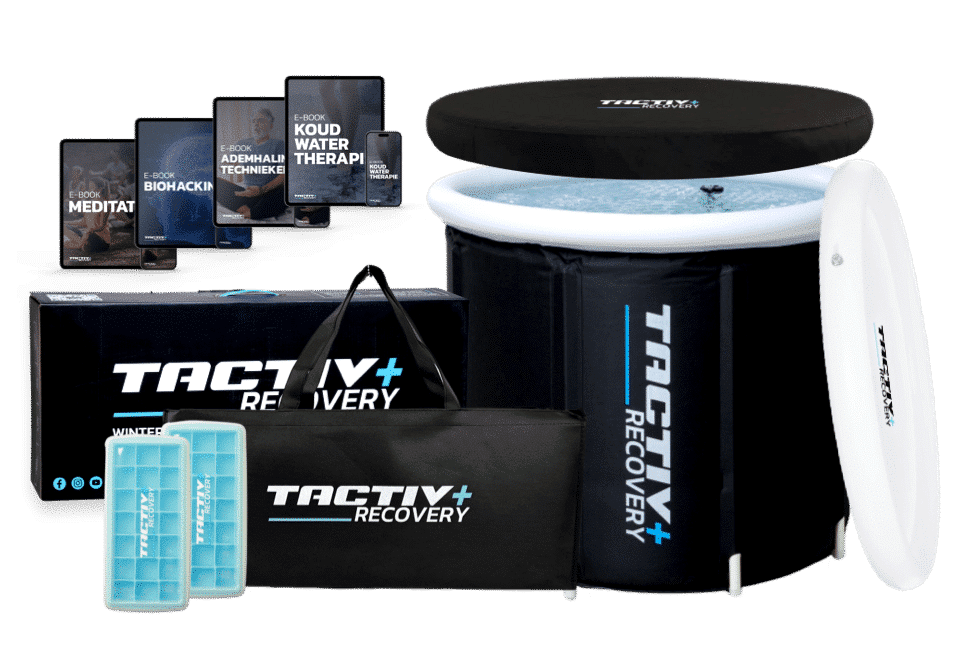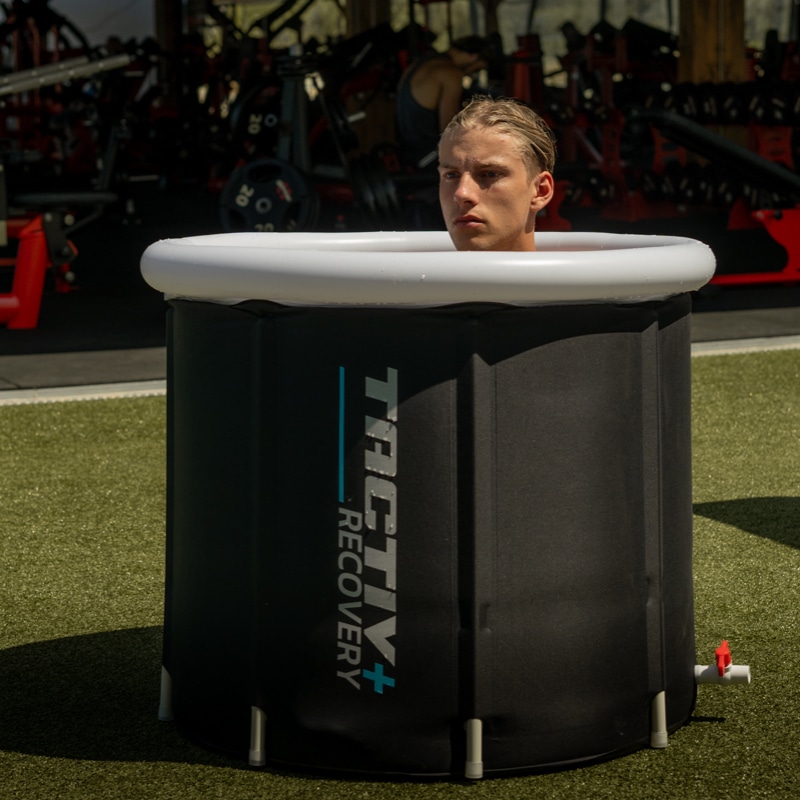Dive into the cooling world of ice baths in sports
Ice baths, known for their cold, refreshing properties, have become a popular method for athletes to recover after intense physical activity. Now a common question asked is, take an ice bath before or after exercise? An ice bath after exercise involves being immersed in cold water, often just above freezing, immediately after a workout or competition. The idea behind an ice bath is that the cold helps constrict blood vessels, which in turn reduces swelling and tissue damage in muscles. This is often followed by a period of warming up, during which the blood vessels expand again, allowing fresh blood to flow to the muscles. This process helps drain metabolic waste products that have built up during exercise. The result is faster recovery, reduced muscle soreness and better overall physical fitness, which is crucial for athletes who train regularly and intensively.
Benefits of ice baths for athletes
Ice baths have become an essential component in athletes’ training regimes, thanks to their wide range of benefits. This cold therapy contributes to faster muscle recovery after intense efforts, such as strength training or endurance sports. The cold temperatures help reduce inflammation and muscle soreness by constricting blood vessels and stimulating circulation. This speeds the removal of lactic acid and other metabolic wastes. In addition, ice baths enhance mental resilience, improve focus and can improve sleep quality. These physical and mental benefits make ice baths a valuable addition to any athlete striving for optimal performance and rapid recovery.
Optimal timing: ice bathing before or after exercise
The choice to take an ice bath before or after exercise can affect its effectiveness. The use of ice baths in sports is based on the idea of cryotherapy, in which exposure to extremely cold temperatures helps reduce inflammation and muscle soreness.
Pre-workout cooling: ice bath before exercise
Taking an ice bath before exercise is less commonly done, but can have certain benefits. An ice bath before exercise can lower body temperature, which can be potentially helpful in hot conditions or endurance sports. It can also help sharpen the senses and mentally prepare the athlete for the upcoming physical exertion.
Post-workout recovery: ice bath after exercise
Taking an ice bath after exercise is more common and highly recommended for quick recovery. The cold water helps lower body temperature and reduce inflammation in the muscles. This is especially helpful after intense workouts or competitions, where muscles can become overworked and fatigued. The cold bath helps to promote blood flow, reduce muscle soreness and swelling, and speeds up the recovery process, making the athlete ready for the next workout sooner.
Cold war against muscle soreness
Ice baths help athletes reduce muscle soreness after strenuous workouts. The cold temperatures of the ice bath can effectively reduce inflammation and swelling in the muscles. This method is not only popular with elite athletes, but is also increasingly used by amateur athletes and fitness enthusiasts as a way to recover faster and minimize muscle soreness.
Win the battle against pain: ice bath against muscle soreness
Using an ice bath against muscle soreness is a proven technique that helps reduce the effects of intense exercise. The cold temperatures help to constrict blood vessels, reducing swelling and inflammation in the muscles. This leads to a reduction in muscle soreness and speeds up the recovery process. For athletes who train regularly, incorporating ice baths into their recovery routine can be a gamechanger, helping their bodies recover faster and improving their performance.
How long in an ice bath after exercise?
The optimal time in the ice bath varies by individual, but a general guideline is 10 to 15 minutes. This is long enough to reap the benefits such as reduced muscle soreness and faster recovery without exposing the muscles to too much prolonged cold, which can be counterproductive. For beginners or those new to ice bath therapy, it may be advisable to start with shorter sessions of 5 to 10 minutes. This helps the body get used to the cold temperatures.
It is crucial to listen to your body and be alert to signs of discomfort or hypothermia. Too long exposure can lead to negative effects such as increased stress levels or even hypothermia. In addition, water temperature plays a role; the colder the water, the shorter the recommended time. Regular users may be able to gradually increase the time, but this should always be done with attention to personal limits and comfort.
These guidelines are a starting point. It is always advisable to seek personal advice, especially if you are new to cold therapies or have specific health issues.
Ice bath after strength training?
Taking an ice bath after strength training raises many questions about its impact on muscle growth. Recent studies point to the complex relationship between cold therapy and muscle recovery. On one hand, ice baths help reduce inflammation and muscle soreness, which may lead to faster recovery after intense strength training. This faster recovery could allow athletes to increase their training frequency, potentially contributing to muscle growth.
However, some research suggests that the extreme cold of ice baths may slow down anabolic processes – which are crucial for muscle building. It is important for athletes to strike a balance between using ice baths for recovery and stimulating muscle growth. It is recommended to monitor personal reactions to ice baths and experiment with different regimens to determine what works best for their individual needs and training goals.
The reason behind the cold: Why ice bath after exercise
The answer to “why ice bath after exercise?” lies in the unique way cold temperatures affect inflammatory responses in the body. After intense athletic activities, such as strength training, muscles experience microscopic tears and inflammation. An ice bath helps reduce this inflammation by constricting blood vessels and lowering muscle metabolism, leading to faster recovery and less muscle sorene
What ice bath to use after exercise?
At Tactiv Recovery, we offer a wide range of ice baths, both for home use and for professional settings. Our products are designed to meet the different needs and preferences of users. Whether you are an athlete looking for an efficient way for muscle recovery, or a health-conscious individual looking to experience the benefits of cold therapy at home, we have the perfect solution. Our ice baths combine advanced technology with ease of use, making them an ideal choice for both professional and personal use.
Final Verdict: Is an ice bath after exercise good for you?
After exploring the various aspects and benefits of ice baths in sports, the question arises, “Is an ice bath good for muscles?” The answer seems clearly positive. Taking an ice bath offers numerous benefits for athletes, ranging from accelerated muscle recovery and reduced muscle soreness to improved overall performance. This method of cold-water therapy has proven to be a valuable tool for muscle maintenance and recovery, especially after intense physical activity such as strength training, long-distance running or intense athletic competition. Taking an ice bath is not just limited to elite athletes; it is accessible and beneficial to anyone engaged in physical activity.
Are you looking for an ice bath?
Check out our ice bath bundles now and get an instant discount with the code “TACTIV10”.

